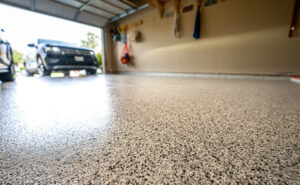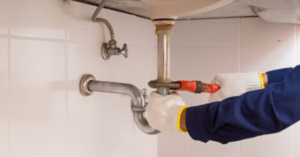Pest invasions can disrupt normal activities and cause damage to plants, crops and property. They can also spread disease.
Prevention includes regularly removing debris and clearing away places for pests to hide. It includes fixing ripped window and door screens and sealing cracks in walls and around pipes. It includes keeping food in sealed containers and storing garbage securely. Contact Pest Control Euless TX now!

Pest identification is an important first step in developing a pest control program. It helps ensure that the correct control tactics are used, and prevents unnecessary risks to people and the environment. It also allows you to evaluate the benefits and costs of each control tactic.
In some cases, precise pest identification may require consulting with experts or sending samples to specialized laboratories. This is especially true when dealing with rare or exotic species. However, for the majority of pests, accurate identification can be done with a little effort.
The key to correctly identifying a pest is to look at it from several different angles, and keep an eye out for any unusual features or behavior. For example, scale insects may look similar to aphids or mites from the side, but can be easily distinguished from them by the way they move. Another good rule of thumb is to always consider whether a pest is alive or dead. Many “pests” are actually beneficial organisms or harmless visitors, and it can be hard to tell if what you are seeing is an actual problem until you get a closer look.
Pests are easier to control when they are in small numbers or in early or late stages of their life cycle. Insects are easiest to control in their immature stages, and weeds are easier to manage when they are seedlings or just beginning to grow (annuals) or when they are preparing for dormancy (perennials).
Once you know what the pest is, you can evaluate its impact on your crop and decide how much harm it warrants. This is called “integrated pest management.” It focuses on preventing pest problems or reducing their damage to an acceptable level, rather than trying to eliminate all of the pests or destroy the crop entirely.
Accurate pest identification can be difficult, especially if you are not familiar with the weeds, insects or diseases that are common in your area. If you are not sure about the identity of a pest, ask your local Agricultural Research Station or Cooperative Extension Agent for help.
Pest Prevention
Pest prevention is a key part of pest control, as “an ounce of prevention is worth more than a pound of cure.” Instead of waiting until an infestation has taken hold, it’s important to prevent pests from getting a foothold by implementing a range of strategies. This includes cleaning surfaces, sealing entry points and regularly inspecting for pest activity. In addition, learning about pests and their ideal habitats can empower individuals to take preventative measures on their own.
Preventing pests is especially important in indoor environments, where they can spread germs, contaminate food and cause structural damage to buildings. For this reason, preventing pests is the primary goal of pest management in many homes, schools, offices and health care facilities.
Keeping surfaces clean reduces the ability of pests to hide, breed and feed. Taking out trash frequently and knowing your local waste collection schedule reduces the chances of overflowing bins that attract pests. Properly storing food in airtight containers prevents pests from gaining access to fresh ingredients. Stacks of cardboard boxes can provide hiding places for rodents and insects, so it’s important to regularly check the contents of grocery bags before carrying them into a home or office.
Other methods to prevent pests include physically modifying the environment and using biological controls. Physical methods of pest control include trapping, screening, fences, barriers, netting and radiation. Devices, machines and other devices that modify the environment include lights, heat, refrigeration, humidity and more.
Chemicals used to kill pests are called pesticides. Common types of pesticides include insecticides, fungicides and herbicides. It’s important to know the differences between different types of pesticides to make informed decisions when selecting an application method for a specific situation.
In addition to minimizing the need for chemical control, prevention can also save money by reducing the amount of treatment needed after an infestation has taken hold. In some cases, the right type of preventative measure can even eliminate the need for any treatment at all. As a result, pest prevention can be considered an extremely cost-effective and environmentally conscious option in addressing pest problems.
Pesticides
Pesticides are chemical substances or mixtures that control unwanted organisms that damage crops, food stores or homes. They include insecticides, herbicides, fungicides and other plant protection products as well as rodenticides and biocontrol agents such as viruses, bacteria and nematodes.
Insecticides reduce the destruction of crops by insects and their eggs. Herbicides kill weeds and improve crop yields. Fungicides protect harvested and stored crops from fungal diseases. In general, pesticides are designed to kill or injure the target pest, while causing minimal injury or nuisance to humans and other non-target organisms.
Each pesticide contains an active ingredient that is by itself toxic to the target pest. The remaining chemicals in a pesticide are called “inert ingredients.” Inert ingredients act as carriers and sticking agents to allow the active ingredient to penetrate, coat or stick to the target organism. In general, inert ingredients make up over 95% of a pesticide product. Most pesticides contain a number of other additives, such as solvents, surfactants and depressants, which help the active ingredient to disperse and absorb into the target organism.
All pesticides have some level of risk to human health. The toxicity of a particular pesticide depends on its mode of action and its persistence in the environment. Some older pesticides, such as DDT and DDE, can persist for years in the soil and groundwater. Newer pesticides are generally less persistent and pose fewer risks to human health, but they still have some hazards. They can, for example, cause nerve damage by interfering with the transmission of nerve impulses and depress the activity of the enzyme cholinesterase.
Pesticides get into the environment through air, water or soil spraying, runoff and leaching. They are also carried by wind currents to other areas or places where they can be ingested or inhaled. They can also be washed into surface waters (rivers, lakes and reservoirs) or absorbed into the groundwater. In addition, they can move through the water and into the atmosphere as vapor or aerosols.
People are exposed to low levels of pesticide residue in their home, schools and workplaces. Those with the greatest exposure are farmers and other workers who apply pesticides. Health Canada carefully considers the health of those who work with pesticides and develops and applies regulations to minimize the health impacts from exposure to pesticides. It reviews and assesses the health impact of new pesticides, including specific risk assessments for sensitive groups such as children and pregnant women. These studies use internationally-accepted study protocols and are overseen by independent experts.
Biological Control
Biological control is the introduction of naturally occurring organisms to manage pests. It predates the modern chemical era and was used before the publication of Rachel Carson’s “Silent Spring”. Many growers and green industry professionals are looking for alternatives to pesticides that have negative effects on pollinators, bees, birds, wildlife and human health. This has led to the resurgence of natural, classical and conservation biological control.
Generally, the goal of biological control is to establish populations of predators or parasitoids at high enough densities to suppress pest species, and to do so with a lower environmental impact than chemical pesticides. Biological control agents can include predatory insects and mites, fungi, viruses, bacteria, or nematodes. Most of these are targeted against specific arthropod pests.
The development and release of a successful biological control agent is a lengthy process, comparable to the amount of time it takes to synthesize, test and evaluate, then place on the market, a new chemical pesticide. The success of a biocontrol programme depends largely on the extensive preliminary studies that must be conducted to develop a comprehensive understanding of both the pest and the natural enemy complex. The ideal biological control agent should have a strong searching ability to locate the pest population, and it should also be able to reproduce faster than its prey (greater potential rates of increase per year or greater fecundity).
In addition to the above requirements, a successful biological control agent should not negatively impact any other species in the ecosystem where it will be introduced. This is important for limiting the risk of adverse ecological impacts from unintended consequences of the biological control program.
It is important to note that whereas resistance to chemical pesticides often develops in pest species, resistance to biological control agents is very rare. Moreover, unlike chemical pesticides, which are known to have negative impacts on water, soil and air quality as well as biodiversity, most invertebrate biological control agents do not. Nonetheless, re-releases of the biological control agent are frequently required, and this is especially true for classical biological control programmes.



